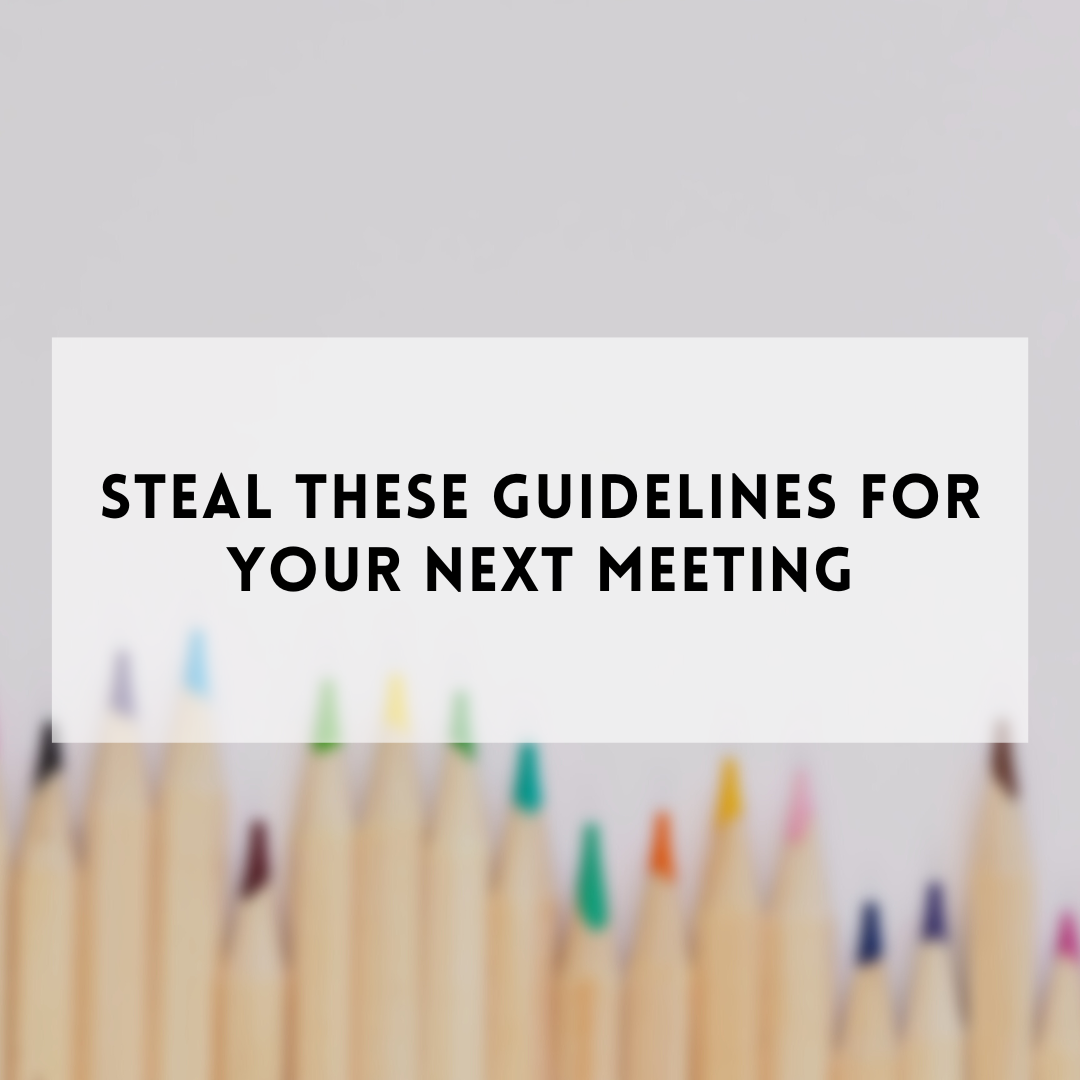Steal these guidelines for your next meeting
Earlier this year, I polled my LinkedIn community and learned that most facilitators’ biggest fear during workshops is managing unruly or disengaged participants. And for good reason! While there’s no magic button to snuff out this behavior completely, there are a few things facilitators can do to get ahead of it. The path of least resistance? Establish ground rules right away.
It may sound simple, but it’s actually a really effective way to discourage disruptive behavior, align on shared understanding, and set the tone for the work ahead.
In today’s post, I’ll share my four favorite ground rules that set teams up for better meetings and workshops, along with a few bonus rules that apply to virtual sessions.
Why use ground rules in your workshop?
Setting guidelines at the beginning of a session invites team members to agree to the ways in which they’ll participate, grounding everyone in a positive, productive attitude.
Getting this consent early on is helpful because it allows you to steer the session back toward the previously-agreed upon rules if participants go astray.
In addition, asking people to consent to ground rules helps set a tone of mutual respect. I like to pause during this setup so the group can (hopefully) agree to what is being asked of them, discuss if something might not work, and add additional guidelines to the list if anything is missing.
Here are the four guidelines that I use most often:
Be human first: Treat yourself and others with kindness and respect, and see one another as people first, job titles second.
Stay present: Stash your tech (phones and laptops) during the session and only attend to them if there is an urgent matter.
Trust: Trust me as your guide, and that I’ve designed a workshop agenda to get the most out of our time together.
Be open: The magic occurs when people come together with differing perspectives and ideas. To tap into that power, let’s be open to what others have to say.
Here are a few more that I add for virtual sessions:
Keep your camera on and mic unmuted (as much as possible): This creates an atmosphere of being together and allows us to read one another’s non-verbals.
Turn off self view: This establishes a more natural way of interacting with one another (where we aren't distracted by our own mirrored image and can instead focus on others).
No multitasking: Our presence and time is all we have – if you’re splitting your attention, you’re stealing from yourself and others in this group (Note: I add extra emphasis here because we can’t stash all our tech – as noted in “stay present” above – since it’s required for virtual sessions).
Bonus guidelines:
Misspell with confidence: We are all spellcheck dependent and, while readability is important, spelling is not. Let go of worrying about spelling and stay focused on the big picture.
You can draw: There’s a common misconception that drawing and sketching are for creatives only, but drawing will allow you to communicate your ideas in ways that words alone cannot. It’s not about being an artist, it’s about sharing ideas. (Demystifying this false narrative helps level the playing field – here are some tips and activities to help you facilitate that with your teams.)
I usually share these guidelines as presentation slides, but you can communicate the information in whichever way feels most authentic to your facilitation style.
My hope is that you can lift some of these for your next session and feel the positive impact it has on attitudes and productivity. By embracing this kind of structure and shared meaning early on, it will create parameters for your time together and set a strong foundation for collaboration and ideation.
If you want more resources for managing disengaged participants, check out this post about 4 ways to re-engage them, or this post with 5 tips for managing unruly or unwilling attendees.
